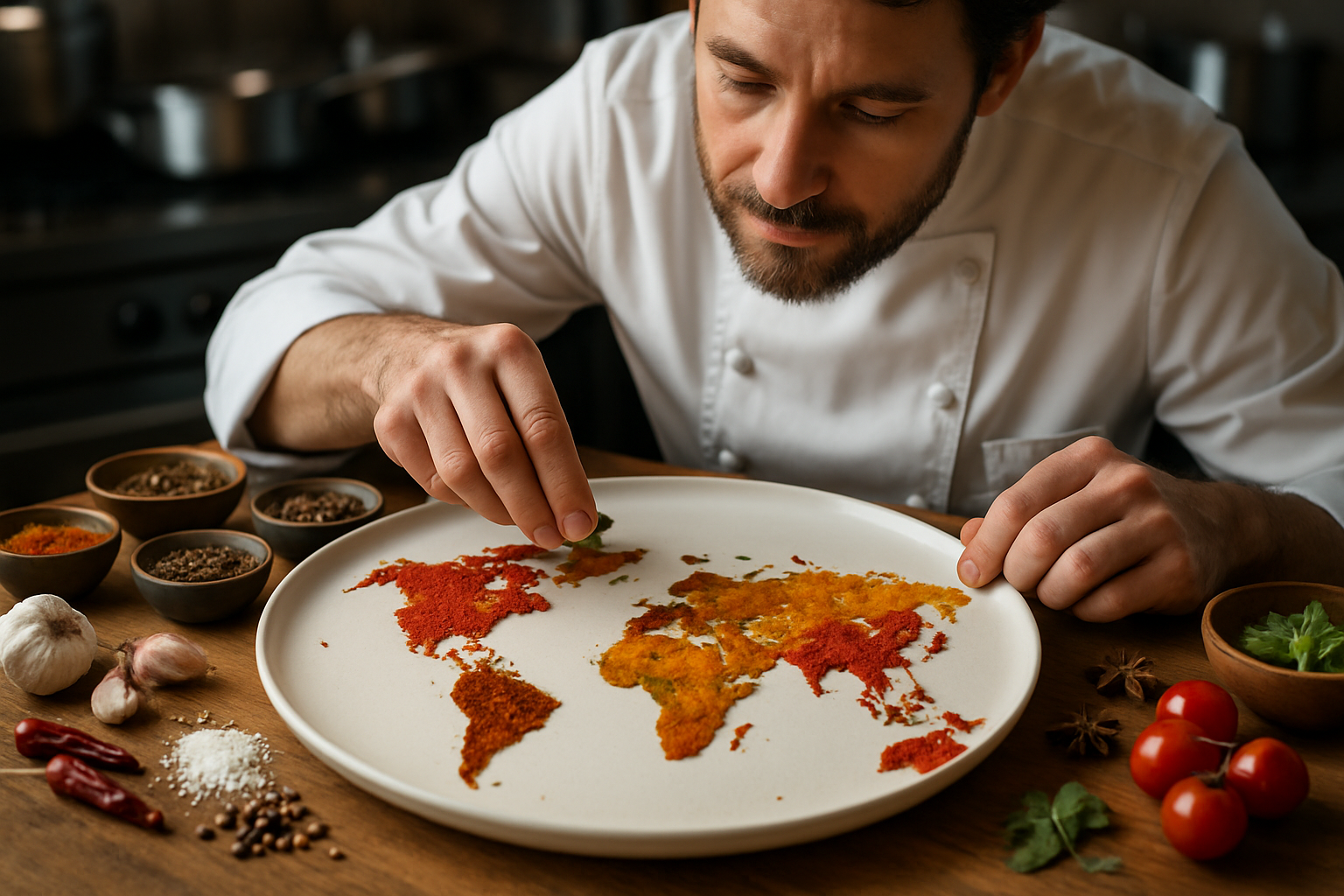Exploring the World Through Spice Tourism
Embark on a sensory journey that tantalizes the taste buds and ignites cultural curiosity. Spice tourism is emerging as a captivating way to explore global destinations, offering travelers a unique lens through which to experience local traditions, culinary practices, and agricultural heritage. This aromatic adventure takes you from bustling markets to lush plantations, unveiling the rich tapestry of flavors that have shaped civilizations for millennia.

The modern concept of spice tourism gained traction in the early 2000s, as food-focused travel experiences began to rise in popularity. Travelers, increasingly interested in authentic and immersive experiences, started seeking out destinations known for their spice production and culinary traditions. This shift in travel preferences has led to the development of specialized tours, cooking classes, and even entire itineraries centered around spices and their cultural significance.
Destinations Leading the Spice Tourism Trend
Several regions around the world have embraced spice tourism, capitalizing on their rich culinary heritage and spice-producing capabilities. Kerala, India, often referred to as the Spice Garden of India, offers travelers the chance to explore vast cardamom, pepper, and cinnamon plantations. Visitors can participate in spice harvesting, learn traditional cooking methods, and visit bustling spice markets.
Zanzibar, off the coast of Tanzania, is another prime destination for spice enthusiasts. Known as the Spice Islands, Zanzibar’s economy was built on the spice trade. Today, travelers can tour fragrant clove, nutmeg, and cinnamon plantations, learning about the islands’ complex history and the role of spices in shaping its culture.
In Granada, Spain, the legacy of Moorish influence is evident in the use of saffron, cumin, and coriander in local cuisine. Spice tours here often combine culinary experiences with visits to historical sites, offering a holistic view of how spices have influenced both food and culture over centuries.
The Multisensory Experience of Spice Tourism
Spice tourism engages all the senses, creating a deeply immersive travel experience. The vibrant colors of turmeric, paprika, and saffron create a visual feast in markets and on plates. The pungent aromas of fresh spices awaken the olfactory senses, while the varied textures – from the smoothness of ground spices to the roughness of whole peppercorns – offer tactile engagement.
Taste, of course, is at the forefront of the spice tourism experience. Travelers have the opportunity to sample spices in their raw form, as well as in traditional dishes that showcase their flavors. This sensory journey is often complemented by the sounds of bustling markets, the rhythmic grinding of spice mills, and the sizzle of spices hitting hot oil in cooking demonstrations.
Educational Aspects of Spice Tourism
Beyond the sensory experience, spice tourism offers significant educational value. Travelers learn about the historical, cultural, and economic importance of spices in different regions. Many tours include visits to spice farms, where visitors can observe sustainable farming practices and learn about the challenges facing spice producers in a changing global market.
Cooking classes are often a key component of spice tourism, allowing travelers to gain hands-on experience in using local spices. These classes not only teach culinary skills but also provide insight into the cultural significance of certain dishes and spice combinations. Some tours even delve into the medicinal properties of various spices, exploring their use in traditional healing practices.
The Impact of Spice Tourism on Local Communities
Spice tourism has the potential to significantly benefit local communities in spice-producing regions. By creating demand for specialized tours and experiences, it provides additional income streams for farmers, market vendors, and local guides. This form of tourism also helps preserve traditional farming practices and culinary traditions that might otherwise be lost in the face of modernization.
However, as with any form of tourism, there are challenges to be managed. Ensuring that the economic benefits of spice tourism reach local communities rather than being captured solely by large tour operators is crucial. Additionally, there’s a need to balance tourist interest with the preservation of authentic local practices and environments.
Spice Up Your Travel Experience
• Learn basic spice-related phrases in the local language to enhance market interactions
• Participate in a spice blending workshop to create your own unique seasoning mix
• Visit a spice plantation during harvest season for a behind-the-scenes look at production
• Explore the use of spices in local traditional medicine and wellness practices
• Attend a spice-themed cooking class to learn how to incorporate new flavors into your home cooking
A Flavorful Journey Awaits
Spice tourism offers a unique and enriching way to explore the world, connecting travelers with local cultures through the universal language of food. By engaging all the senses and providing deep insights into culinary traditions, this trend creates memorable experiences that go far beyond typical sightseeing. As you plan your next adventure, consider following the spice trail – you might just discover a whole new world of flavors and stories waiting to be explored.





